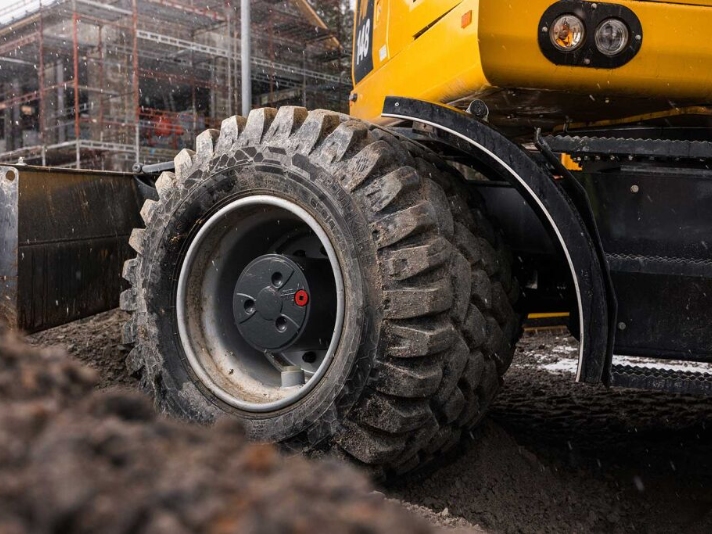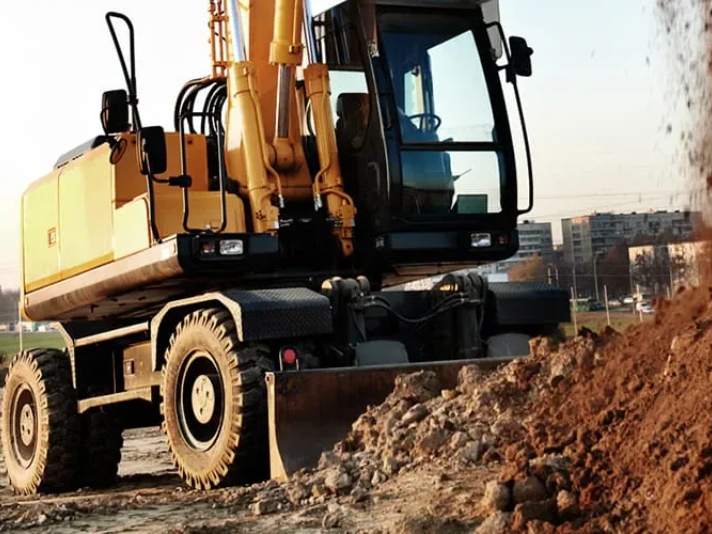Recommend Products
-
$28,500$30,000
-
$115,000$130,000
-
$76,000$78,000
-
$17,000$18,500
Tire excavators do not account for a large proportion of the total sales of excavators, but they are not without them. The advantages and disadvantages of tire excavators are very obvious. The advantages are mainly due to the convenience of tire movement, especially in urban engineering work. In order to avoid damage to cement or asphalt roads caused by excavator tracks, crawler excavators are either moved with the help of trailers. Small crawler excavators can add rubber plates to the excavator tracks for walking, but they are severely worn and move slowly. Tire excavators completely solve this problem. However, tire excavators have weak grip on muddy roads due to tire problems, the center of gravity of the chassis is high, and the degree of danger of working in slopes is high. Most of the work of tire excavators is suitable for urban infrastructure and road reconstruction.
The three Caterpillar tire excavators introduced by Tiedou today can be purchased by users according to the working environment and different conditions. If users have higher budget requirements for the price of the new Caterpillar tire excavator, they can choose a used tire excavator. Although there are defects in appearance, the low price and very good performance are still worth buying.
Caterpillar M314. M315 and M316 are three common tire excavators, widely used in various engineering construction projects. The following are their parameter configuration, specification information and main differences:

Caterpillar M314
Parameter configuration and specification information:
Engine power: 110 kW (148 HP)
Operation weight: 14.400 kg
Maximum digging depth: 5.600 mm
Maximum digging radius: 8.850 mm
Maximum digging height: 9.530 mm
Bucket capacity: 0.73 m³
Hydraulic system flow: 268 L/min
Travel speed: 30 km/h
Caterpillar M315
Parameter configuration and specification information:
Engine power: 110 kW (148 HP)
Operation weight: 15.400 kg
Maximum digging depth: 5.880 mm
Maximum digging radius: 9.010 mm
Maximum digging height: 9.700 mm
Bucket capacity: 0.86 m³
Hydraulic system flow: 268 L/min
Travel speed: 30 km/h

Caterpillar M316
Parameter configuration and specification information:
Engine power: 125 kW (167 HP)
Operating weight: 17.000 kg
Maximum digging depth: 6.200 mm
Maximum digging radius: 9.350 mm
Maximum digging height: 10.150 mm
Bucket capacity: 1.00 m³
Hydraulic system flow: 300 L/min
Travel speed: 30 km/h
Main differences:
Engine power:
M314 and M315 have the same engine power of 110 kW (148 HP), while M316 has a higher engine power of 125 kW (167 HP).
Operating weight:
M314: 14.400 kg
M315: 15.400 kg
M316: 17.000 kg
Maximum digging depth:
M314: 5.600 mm
M315: 5.880 mm
M316: 6.200 mm
Maximum digging radius:
M314: 8.850 mm
M315: 9.010 mm
M316: 9.350 mm
Maximum digging height:
M314: 9.530 mm
M315: 9.700 mm
M316: 10.150 mm
Bucket capacity:
M314: 0.73 m³
M315: 0.86 m³
M316: 1.00 m³
Hydraulic system flow:
M314 and M315 The hydraulic system flow rate of the M316 is 268 L/min.
The hydraulic system flow rate of the M316 is higher, reaching 300 L/min.
Driving speed:
The driving speed of the three excavators is 30 km/h.
Considering the targeted work type of the user who purchases the tire excavator, it is also necessary to consider whether the work will be stable in the future. Tiedou mentioned above that the center of gravity of the tire excavator is high, and the working performance of the tire design is far inferior to that of the conventional crawler excavator of the same level. Although the tire excavator is now equipped with a retractable fixing device, it still has certain shortcomings. And the most important thing is that the price of the same level of tire excavators is higher than that of conventional crawler excavators.